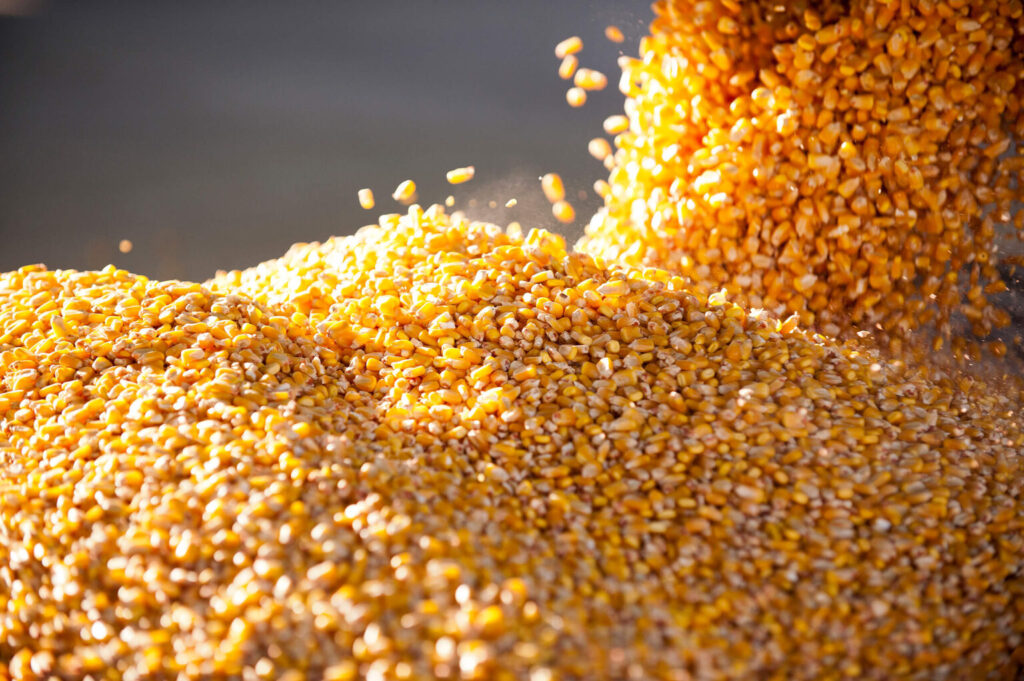
Maize DDGS (Distillers Dried Grains with Solubles) is a valuable byproduct of the corn ethanol industry that provides several benefits for livestock and aquaculture producers. It is a high protein and high energy feed ingredient that can help reduce feed costs and improve animal performance. In this blog, we will discuss the manufacturing process of Maize DDGS, from corn grain to the final product.
Step 1: Corn Cleaning and Preparation
The first step in the production of Maize DDGS is to clean and prepare the corn grain. The corn is thoroughly cleaned to remove any impurities or foreign materials. It is then ground into a coarse meal or flour and mixed with water to create a mash.
Step 2: Enzymatic Hydrolysis
The corn mash is then treated with alpha-amylase and glucoamylase enzymes to break down the starch into simple sugars, such as glucose and maltose. This process, known as enzymatic hydrolysis, typically takes 4-6 hours and occurs at a temperature of around 85°C.
Step 3: Fermentation
After enzymatic hydrolysis, the mash is cooled to around 30-35°C and transferred to a fermentation tank. Yeast is added to initiate the fermentation process, which typically takes 40-50 hours to complete. During fermentation, the yeast consumes the sugars in the mash and produces ethanol and carbon dioxide as byproducts.
Step 4: Distillation
After fermentation, the mixture of ethanol and water, known as the beer, is transferred to a distillation column. The distillation column separates the ethanol from the water and concentrates it to around 95% purity. The remaining byproduct, known as distillers grains, is then dried to create Maize DDGS.
Step 5: Drying and Pelletization
The distillers grains are first separated from the liquid ethanol and transferred to a drying system. The drying process removes moisture from the distillers grains, reducing the moisture content from around 70% to less than 12%. This results in a dry, powdery substance that can be easily stored and transported.
The dried distillers grains are then pelletized to improve handling and storage. Pelletization involves compressing the distillers grains into small, uniform pellets using heat and pressure. The pellets can then be bagged or stored in bulk and transported to livestock and aquaculture producers for use as feed.
Benefits of Maize DDGS
Maize DDGS is a valuable feed ingredient for livestock and aquaculture producers. It is a high protein and high energy feed ingredient that can help reduce feed costs and improve animal performance. It is also a sustainable alternative to traditional feed ingredients, as it reduces waste from the corn ethanol production process.
In addition to its nutritional benefits, Maize DDGS may also have health benefits for animals. Studies have shown that feeding Maize DDGS to pigs can improve gut health and reduce the incidence of enteric diseases. It has also been shown to improve the immune response in chickens and reduce the risk of bacterial infections.
Conclusion
In conclusion, Maize DDGS is a valuable byproduct of the corn ethanol industry that provides several benefits for livestock and aquaculture producers. The production process involves cleaning and preparing the corn grain, enzymatic hydrolysis, fermentation, distillation, and drying and pelletization of the distillers grains to create Maize DDGS. By using Maize DDGS as a feed ingredient, livestock and aquaculture producers can reduce feed costs, improve animal performance, and promote sustainable production practices.
